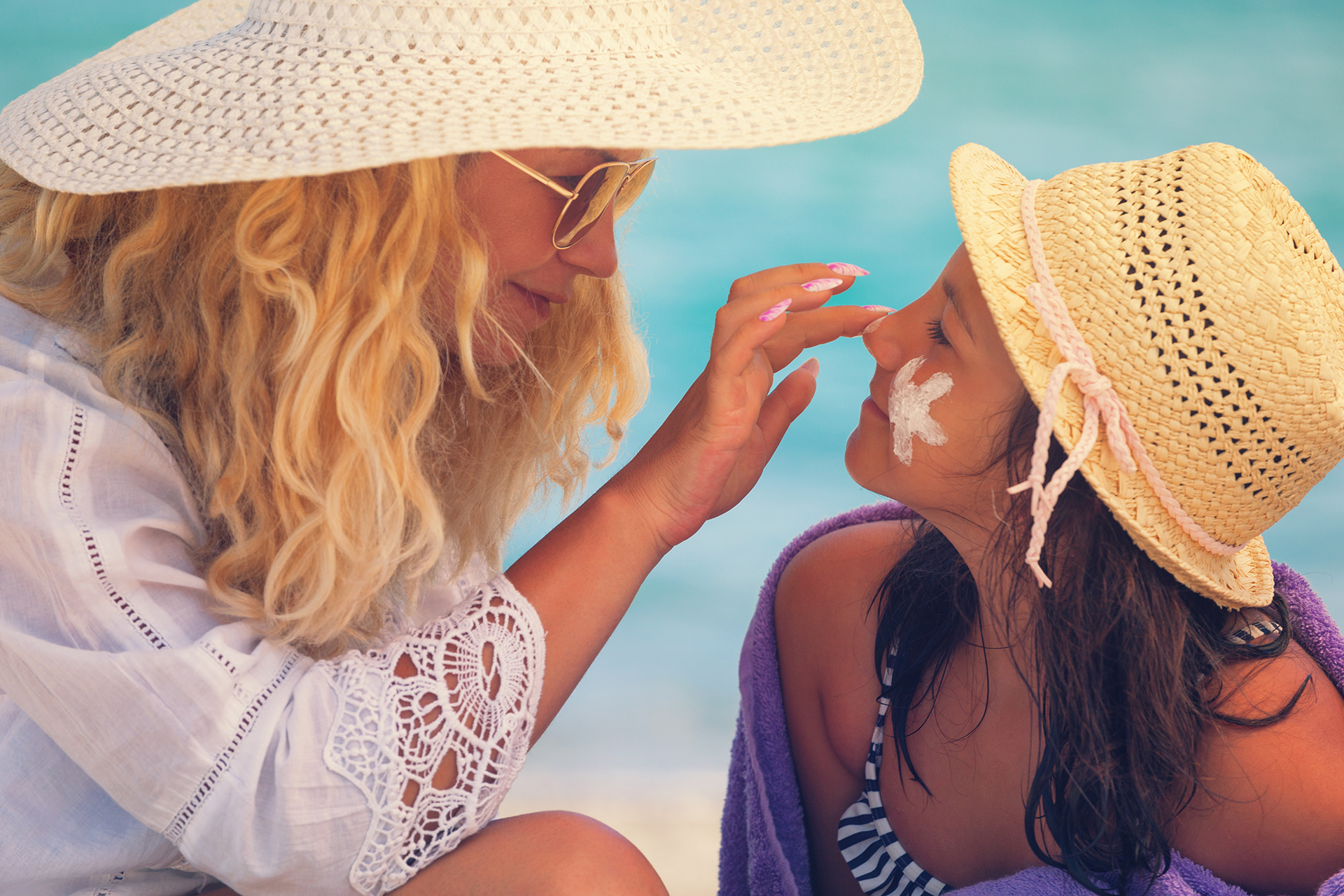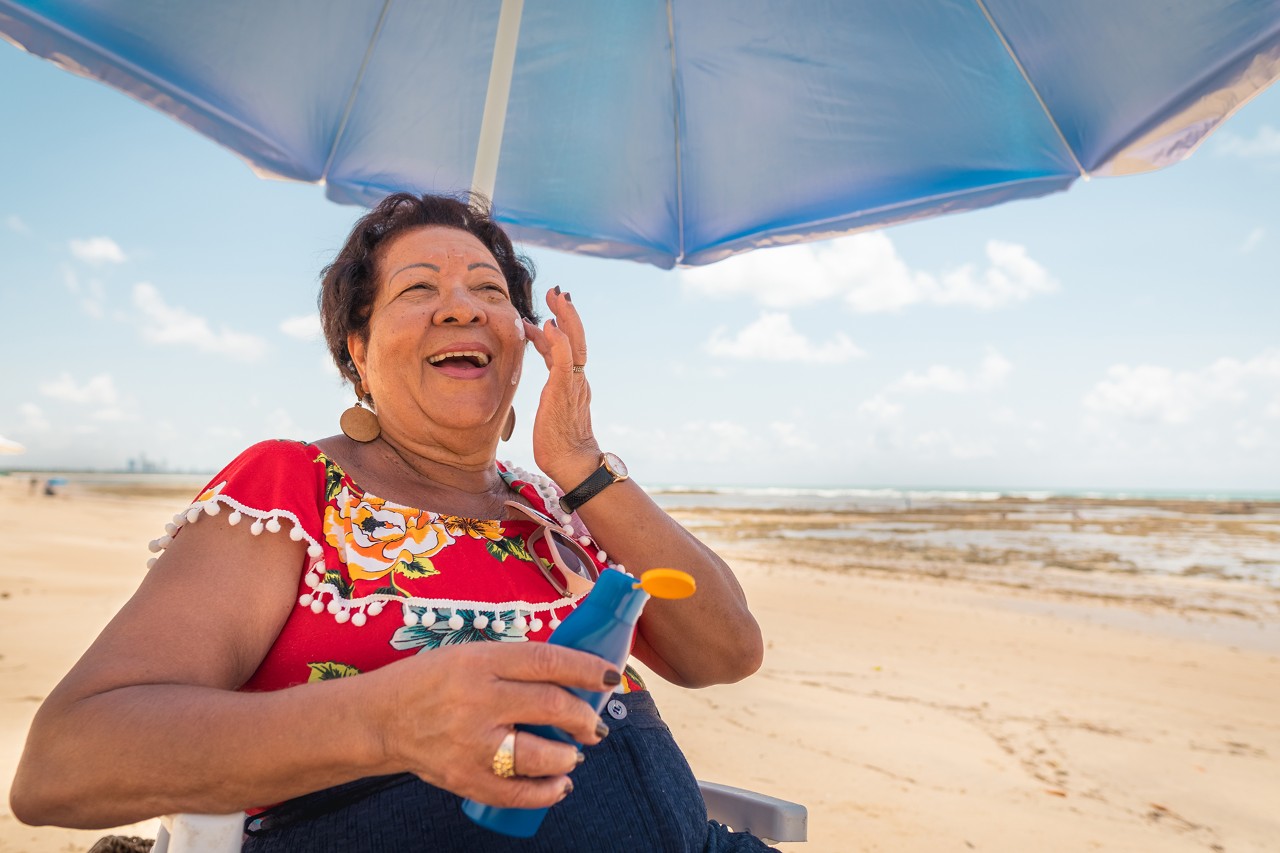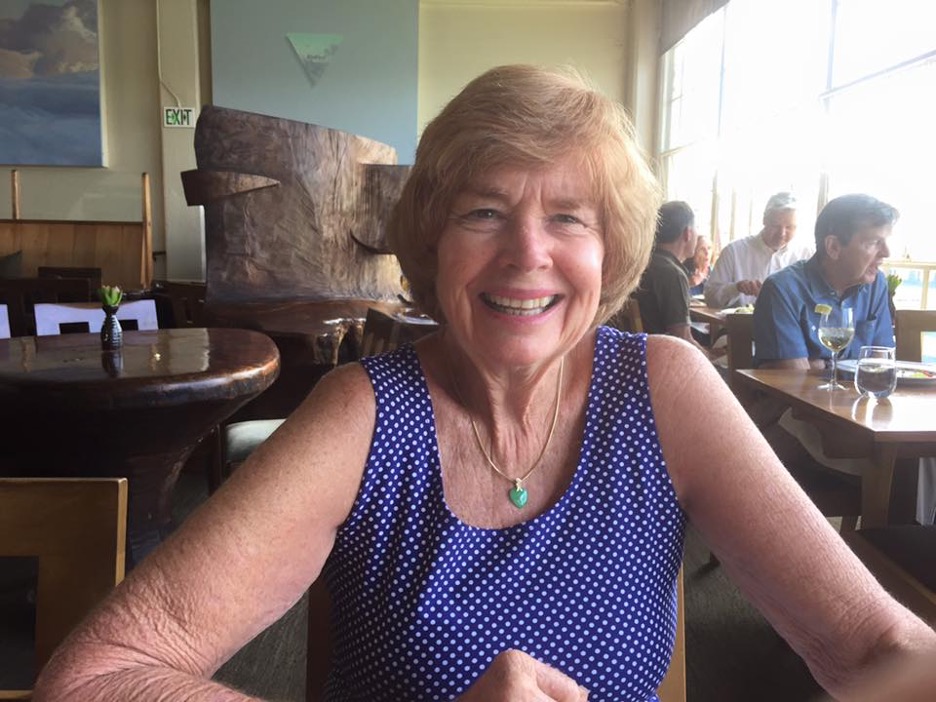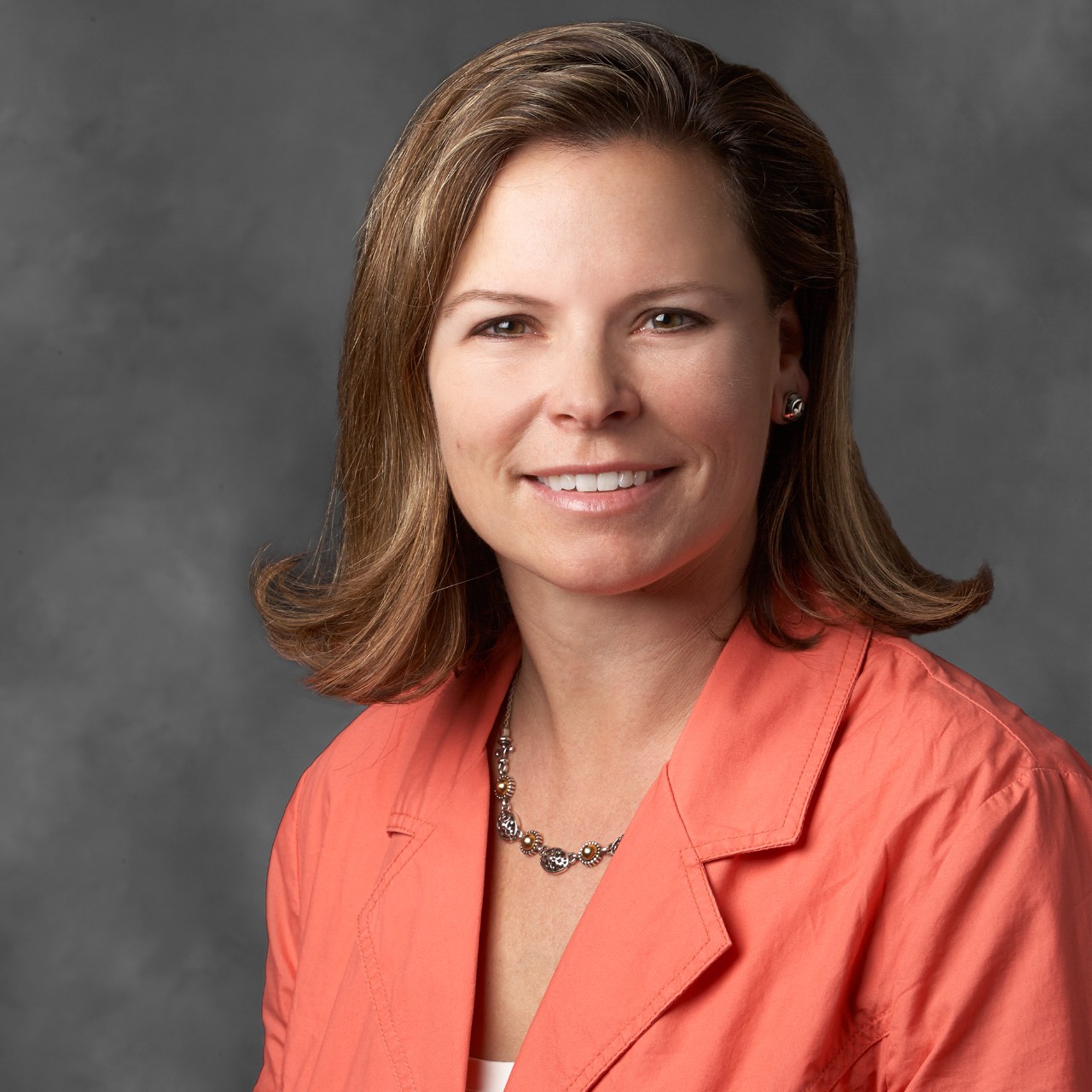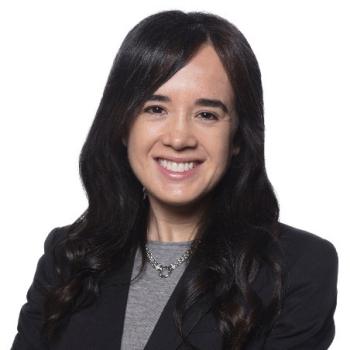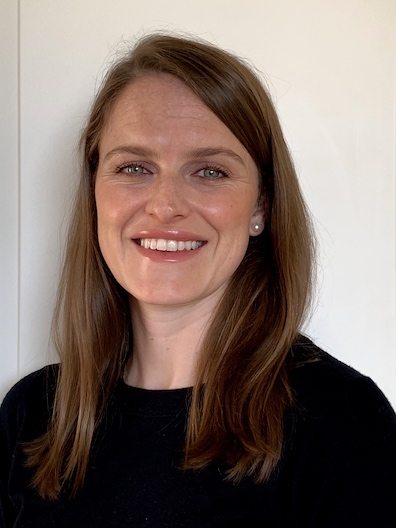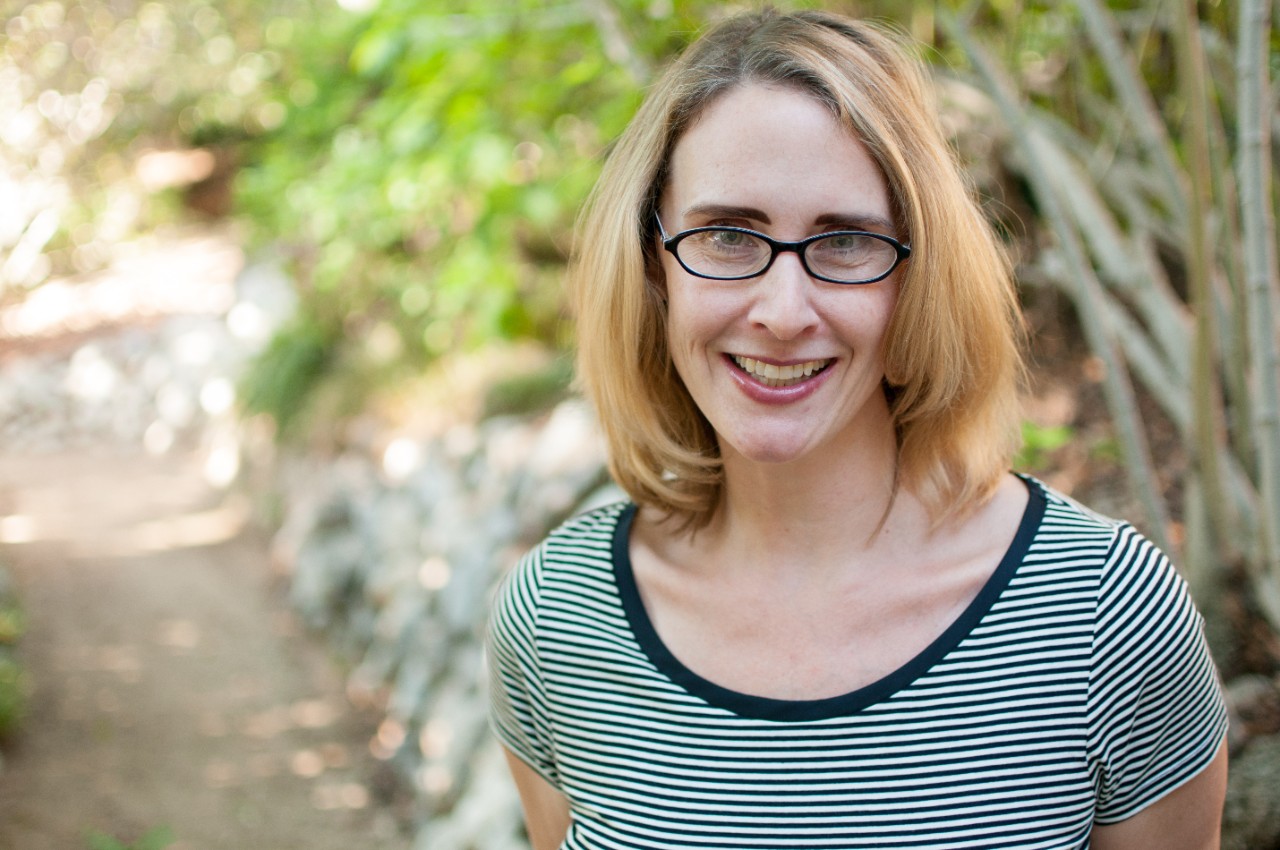- Check your skin regularly to help identify early warning signs of melanoma: Examine your skin, and those of your loved ones, every month to help identify melanoma at an early stage while it is still easily treatable. A look today may mean a life tomorrow.
- Check for unusual or “ugly duckling” spots or moles: One of the easiest ways to identify an early melanoma is to look for spots or moles that appear different from others on your body.
- Check for spots or moles that have unusual shapes: Spots or moles may be melanomas if one-half doesn’t look like the other or if the edge is irregular or jagged.
- Check for spots or moles that have more than one color: Spots or moles may be melanomas if they are multi-colored. The most frequent colors include black, brown, tan, red, blue or white. However, a small number of melanomas are pink or skin-colored.
- Check for spots or moles that are large: Most melanomas are larger than a pencil eraser when diagnosed. However, melanomas can also be detected when they are smaller in diameter.
- Check for new spots or moles: It is normal to get new moles while you are younger; however, moles tend to develop less often after the age of 50. Although a melanoma may develop from a mole, it most commonly arises on “clear skin.”
- Check for sudden changes in spots or moles: The appearance of a spot or mole may change gradually as you get older; however, a sudden change may be a warning sign of melanoma.
- Check your entire body: Although melanoma usually occurs on an area of your skin that is exposed to the sun, it may be found anywhere on your body. Make sure to check the bottoms of your feet, the palms of your hands and your fingernails and toenails. A brown or black streak under a nail may be a melanoma, especially if a single nail is involved.
- Ask someone else to check areas of your body that are difficult to examine, including your back: About one-third of melanomas occur in hard-to-see areas of the body, including the back. Make sure to ask someone else to help you examine these sites for signs of skin cancer. This can greatly improve the chance of finding an early, more curable melanoma.
- Most importantly, make an appointment with your health provider right away if you or a loved one finds a suspicious spot or mole. When in doubt, check it out!
Health Equity
Melanoma Facts
Hang 10 Facts for Melanoma
- Fair Complexion : Your risk of getting melanoma depends on your skin color/pigmentation, how your skin reacts to the sun (ultraviolet light) by either tanning or burning, and how much ultraviolet (UV) light exposure you have had. If you have light skin that tends to freckle and burn easily, red or blond hair, and blue or green eyes, you are especially susceptible to melanoma. People with darker complexions are at lower risk for melanoma and other skin cancers, though rates of melanoma in the US are rising in those of Asian race and Hispanic ethnicity.
- Family History of Melanoma: Your risk of melanoma is increased if you have a family member who has the disease. While less than 10% of melanoma cases are linked to an inherited genetic trait, families tend to have similar skin coloration and reactions to the sun, as well as shared environmental UV exposures.
- Exposure to Ultraviolet Light from the Sun: Ultraviolet-B (UV-B) radiation from the sun is the main cause of sunburn and skin cancer, although UV-A also plays a role. In people with very light skin, sunburn can occur after only a minutes of sun exposure. Having a history of five sunburns doubles your chances of getting melanoma. Sunrays that damage your skin can reflect off of water, sand and concrete and can penetrate windows.
- Exposure to Ultraviolet Light from Tanning Beds or Sunlamps: Indoor tanning beds emit both UV-A and UV-B rays with higher concentrations than natural sunlight. If you use a tanning bed for 20 minutes, it is like spending up to 3 hours at the beach with no sun protection. Your risk of developing melanoma can increase by 20% after even one indoor tanning session. If you use a tanning bed before you are 35, your risk of melanoma increases by 75%. Indoor tanning beds are banned in Australia and Brazil, with legislation in place to ban them in other countries. In the United States, 19 states and the District of Columbia ban tanning bed access to minors (under age 18) with state bills pending for more states to do so.
- Atypical or a Large Number of Moles: The most important clinical risk factor for melanoma is having a lot of moles, especially if these moles are larger (bigger than a pencil eraser) or look atypical. While most melanomas do not come from an existing mole, having lots of moles increases your risk of getting melanoma. A mole count of 50 or more is considered increased. People with an atypical mole pattern benefit from total body photography and routine skin monitoring by a dermatologist.
- Age: If you are between the ages of 25 and 29, melanoma is the most common form of cancer you might suffer. Melanoma is second only to breast cancer in women between the ages of 30 and 35. Your risk of melanoma increases with age, and it is most often diagnosed if you are middle aged. About 70 percent of melanoma cases are diagnosed in people age 55 or older. While new medications (immunotherapy and molecularly targeted therapy) have reduced death rates from advanced melanoma over the past 5 years, white males over the age of 50 have a higher risk of dying from melanoma, often related to later detection of more aggressive skin tumors.
- Employment Out-of-Doors: If you are employed out of doors, like a construction or agricultural worker, you are at more risk of developing melanoma since you will receive increased exposure to ultraviolet radiation. Some melanomas occur in chronically sun-damaged skin (face, ears, scalp, arms), while others occur in more intermittently sun-damaged skin (trunk).
- Recreation Out-of-Doors: If you recreate out of doors, like a surfer, hiker, swimmer or other athlete, you are at greater risk of melanoma due to your increased exposure to ultraviolet radiation. Sweating may also contribute to your risk of skin damage since it makes sunscreen less effective and may increase your sensitivity to the sun.
- Immune System-Suppressing Diseases or Treatments :If you’re immune system is suppressed due to medications you take after an organ transplant or have HIV/AIDs, you are more susceptible to melanoma and other skin cancers.
- Previous Skin Cancers: If you have had basal or squamous cell skin cancer or precancers called actinic keratosis, you are at higher risk of developing melanoma, since these lesions are all related to UV exposure. You are also at higher risk of developing another melanoma if you have already had a skin melanoma, especially in the first 3 years after your diagnosis.
- Wear Protective Clothing When You Are Exposed to the Sun: Many comfortable clothes and hats are available with an ultraviolet protection factor (UPF) of 50 in the US. You generally don’t need to apply sunscreen under clothing when outdoors. It is best to wear a broad-brimmed hat that covers your ears and shades your face and neck. Wear sunglasses to protect your eyes from damaging UV radiation; wrap-around sunglasses are best, but make sure to look for a label that shows UV protection. Wear lightweight, long-sleeved shirts and pants with UV protection in the fabric, although any clothing is better than none for sun protection. Rash guard shirts are best while swimming.
- Use Sunscreen on All Exposed Parts of Your Body: You should use a broad-spectrum, water-resistant sunscreen that protects against both kinds of ultraviolet light (UV-A and UV-B). You should use a sunscreen with a sun-protection factor (SPF) of at least 30. If you have very light skin, are exposed to more intense sunlight (nearer the equator), or are going to be in the sun for a longer period, it is best to use sunscreen with a higher SPF (50+), as well as protective clothing, hats, and eyewear. For maximum protection, you should use a sunscreen containing UV filters that cover the entire ultraviolet light spectrum. Better UV filters in chemical sunscreens may be available outside of the US. Mineral sunscreens contain micronized zinc oxide or titanium dioxide, and higher concentration are needed for broad spectrum UV protection (at least 20%). The Food and Drug Administration does not question the safety of currently available sunscreens in the US. Further studies have been requested before approval of UV filters outside of the US.
- Apply A Sufficient Amount of Sunscreen Before Exposure: You should apply sunscreen about 30 minutes before going outside so it has time to take effect. If you are an adult, you should apply about one ounce (two tablespoons) of sunscreen to the exposed areas of the body.
- Ask Someone Else to Apply Sunscreen to Hard to Reach Parts of Your Body: You should apply sunscreen to your back and shoulders. Nearly 40% of people rarely or never apply sunscreen to their back, which is a common site of melanoma in men and women. If you cannot reach the areas, ask a friend to apply the sunscreen for you. Over 40% of people rarely or never ask someone else to apply sunscreen to their back.
- Reapply Sunscreen Every Two Hours and After Swimming or Excessive Sweating: Sunscreen effectiveness wears out after about 2 hours, so if you are in the sun longer, be sure to reapply. If you’re skin starts to get pink or red (sunburn), get out of the sun, cover up , and seek shade. Putting on more sunscreen won’t prevent you from burning!
- Avoid Sun Exposure When You Can, and Seek Shade Between 10:00 a.m. and 4:00 p.m when the Sun’s Rays are the Strongest: Even on a cloudy day, up to 80% of the sun’s ultraviolet rays can pass through the clouds.
- Create Your Own Shade if None is Available: You should use an umbrella to create shade.
- Take Special Precautions with Babies: You should keep infants, under six months of age, out of the sun by using protective clothing, hats, strollers or other coverings. It is best to avoid (or use only minimal) sunscreen use in babies less than 6 months of age and to seek shade instead. Sunscreen is safe to use in babies older than six months, either chemical or mineral brands. Be sure that your toddler wears sunglasses when outdoors.
- Use Extra Sun Protection During Childhood and Adolescence: If you are a minor, you should use extra sun protection. About 40-50% of total UV exposure through age 60 happens before the age of 20. In addition, the more sunlight you have as a child, the more moles and freckles you tend to develop as an adult, especially if you have lighter skin.
- Use Extra Protection if You are Near Snow, Water, Sand or Concrete Which Reflect and intensify the Damaging Rays of the Sun: UV-B intensity is greater with altitude, so don’t forget to use sunprotection while hiking or skiing at higher altitudes.
Surf the 7 Cs!
Melanoma can be prevented by reducing ultraviolet radiation exposure from natural sunlight and indoor tanning and by increasing the use of sun protection. These goals are particularly important in children and adolescents, who spend much time outdoors year-round, in one of the sunniest states. If you COVER yourself and your children when outdoors, you can prevent melanoma from ever having a chance to develop.
CHECK yourself and your loved ones for unusual, “ugly duckling” spots or moles on your skin. Melanoma often shows early warning signs of color change, growth, or bleeding of a visible mark on your skin. By checking your skin regularly (once a month), you can help to diagnose melanoma at an early point, when the disease is easily treatable. CHECKING for melanoma takes minutes to do and can save your life or that of someone you love.
Any time you find a suspicious mole or spot on your skin, CONSULT immediately with your health care provider to arrange an examination. The earlier a melanoma is diagnosed, the higher the chance for cure.
We are partnering with the national War on MelanomaTM program to reduce melanoma incidence and mortality nationwide - Learn more about research efforts to prevent melanoma, improve early detection, and treat it more effectively.
The best progress in medicine happens in partnership with the community. If you, a family member, or a loved one has been personally affected by melanoma and would like to join our efforts, please consider a CONTRIBUTION. With your support, we aim to save lives by educating and engaging the community in early detection and prevention, as well as speeding the progress of research and discovery of innovative treatments. Your CONTRIBUTION will go directly to support melanoma research, education, and community outreach efforts to wipe out this deadly disease.
Despite significant advances in melanoma treatments over the past decade, about one-half of patients fail to respond. Over 10,000 Californians will be diagnosed with melanoma in 2020, and about 600 may succumb to disease. Finding a CURE will not only save these needlessly lost lives but it will also spare melanoma patients from needing more invasive surgery and costly medications that disrupt their normal daily activities, cause them to have to take time off from work, affect their quality of life and potentially result in serious long-term side effects. We hope that you join us in our efforts to wipe out melanoma in California through prevention, early detection, and research to find the most effective treatments.



